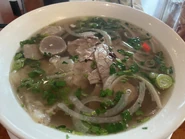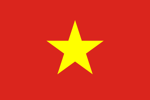
The Socialist Republic of Vietnam is a country in Southeast Asia with its capital at Hanoi. Vietnam, along with China, Cuba, and Laos, is one of the only four countries to be a single-party communist state, and it came into being at the end of the Vietnam War when the communist North Vietnam conquered the United States-backed Vietnam in 1975 after twenty years of division between north and south.
History
Ancient history
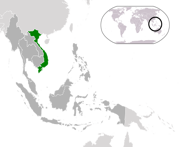
Vietnam was a state constantly fighting for its independence, having to fight against China for a millennium before France's invasion in the 1850s.
Vietnam was at last conquered by France in the 1880s after they took over Cochinchina in the Tonkin War in 1885, and from 1885 to 1954 it was ruled together with Laos and Cambodia as French Indochina. The French colonial authorities used the Vietnamese for slave labor in mines, and the people of Vietnam suffered under the rule of France.
For this reason, some of the angry Vietnamese helped the Empire of Japan in conquering Indochina during World War II, while others such as Ho Chi Minh led armed resistance to Japan. Ho Chi Minh led the Viet Minh in a guerrilla war against the Japanese until their withdrawal in 1945, and from 1945 to 1954 the Viet Minh waged continued war against France in the First Indochina War. The communist rebels won independence and forced France to withdraw, leaving Vietnam independent.
Vietnam War
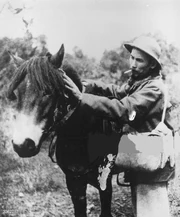
Unfortunately, the Geneva Accords divided Vietnam between Ho Chi Minh's Communist Party of Vietnam in the north and Ngo Dinh Diem's dictatorship in the south. North Vietnam is the precursor state of modern Vietnam, as it had a communist government. Ho Chi Minh decided to reunite Vietnam by sending advisers to foment revolution against the unpopular and cruel Ngo Dinh Diem, with his advisers assisting in the creation of the Viet Cong national liberation army in the south. The Viet Cong were later assisted by the North Vietnamese Army (NVA) in their war against South Vietnam after September 1959, and the United States responded by sending troops to Vietnam to help the South Vietnamese. In 1964, the USA claimed that North Vietnamese patrol boats had fired on USS Maddox in the "Gulf of Tonkin Incident", and the result was the outbreak of the Vietnam War between the USA and North Vietnam and their Viet Cong allies.
The USA gathered several other countries to help them in crushing the communists, with South Korea sending three divisions and the Philippines, Thailand, Australia, New Zealand, Spain, and other countries sending troops. The war would see the Americans do most of the fighting against the communists, but after the 1968 Tet Offensive, public opinion turned against the war, and President Lyndon B. Johnson decided not to run for another term in office. His successor, Richard Nixon, succeeded in gradually withdrawing US troops from Vietnam while stepping up the bombing of North Vietnam and the Ho Chi Minh Trail and Sihanouk Trail supply routes in Laos and Cambodia, even ordering an invasion of Cambodia in 1970 to crush the Khmer Rouge guerrillas.
In 1973, North Vietnam agreed to the Paris Peace Accords with the Americans after defeating them in the Tet Offensive and Easter Offensive psychologically (although their forces suffered heavy losses and were tactically defeated), and the Americans agreed to withdraw if North Vietnam would make peace with the south. However, in 1974 hostilities restarted, and in April 1975 North Vietnamese tanks entered Saigon, ending the war.
Reunification and current status
Vietnam was reunified formally on 2 July 1976 a year after the war's end, with a communist government ruling the country. It was supported by the Soviet Union, and for this reason, China turned its back on Vietnam. In 1979, Vietnam invaded neighboring Cambodia due to a series of border clashes with the Khmer Rouge, and China responded by invading Vietnam during the Cambodian-Vietnamese War, which lasted into the 1980s until the Khmer Rouge government of Lon Nol and Pol Pot was overthrown. Vietnam began a series of economic and political reforms in 1986 to make the country a contender in world affairs, and in 2007 it joined the World Trade Organization after its economy boomed. Today, Vietnam is a communist developing country, and it is a single-party state.
Culture
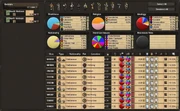
Vietnam had a population of 91,700,000 people in 2015, making it the 8th largest Asian population and the 14th largest in the world. 85.7% are Vietnamese (Kinh), 1.9% Tay, 1.7% Tai, 1.5% Muong, 1.4% Khome, 1.1% Hoa, 1.1% Nung, 1% Hmong, and 4.1% others. 45.3% of the population practices indigenous beliefs, 29.6% atheist, 16.4% Buddhist, 8.2% Christian, and .4% other.
